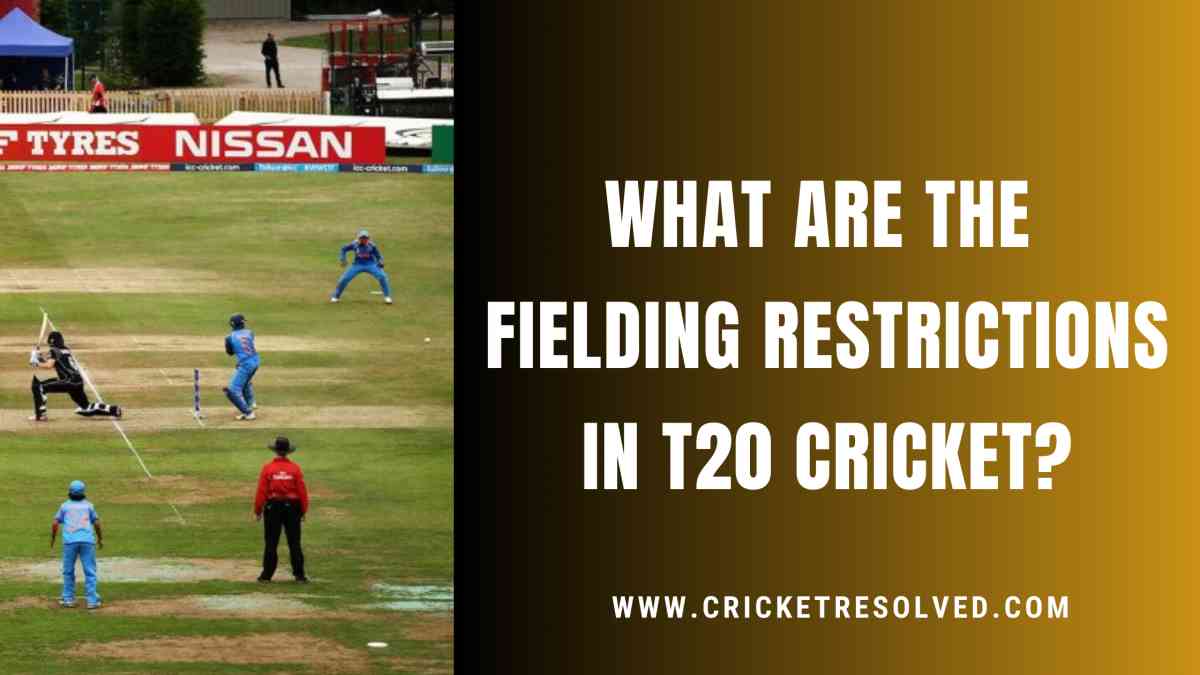
T20 cricket has captivated fans across the globe with mindblowing performances from players. Since the shortest format is more favourable for batters, the fielding team needs to be mindful of placing the fielders in the right positions.
Now, it may seem like an easier task, but it’s not given that there are fielding restrictions put in place by the ICC. So what are the restrictions?
In this article, I will explain the fielding restrictions imposed in T20 cricket.
Field Restrictions in Powerplay (1-6 Overs)
The initial 6 overs in a 20-over match are known as the powerplay. In this phase, a maximum of 2 fielders are allowed outside of the 30-yard circle.
During the powerplay, the batters look to cash in on this fielding restriction by hitting boundaries and sixes, as there are fewer fielders.
Field Restrictions for Rest of the Innings (7-20 Overs)
Once the powerplay is over, teams can field a maximum of 5 fielders outside of the circle. This relaxation in the field puts some pressure on the batters to find gaps to score boundaries.
Even though 5 fielders are allowed to field, there are some restrictions as well. A team can’t place more than 2 fielders behind the square leg at any point during the match. Moreover, the fielding team can place a maximum of 5 fielders on the leg side of the pitch.
But why are there such restrictions?
This restriction is in place to prevent teams from using the bodyline tactic. If you want to learn more about it, then read our dedicated article here.
Field Restriction for Slow Over Rate
Now, this is a new addition to the format. To tackle the slow over rate and encourage teams to finish the innings in the stipulated time, the ICC came up with a new rule in 2022.
So what is this new fielding rule?
You see, every T20 inning needs to be completed in the allotted time, which is 85 minutes. So, the bowling team must begin the 20th over by the 85th minute.
If they fail to keep up with the time, then they are asked to remove 1 fielder from outside the circle. So the fielding team will then be left with 4 fielders instead of 5 fielders outside the 30-yard circle until the innings is over.
Now this will free up the batters to hit big shots and shift the pressure on the bowlers.
What Happens if the Field Restrictions are not Followed?
So, if a team breaks the field restrictions, they are penalised by the on-field umpires. If the on-field umpires and TV umpire come across any breach once the ball is released by the bowler, then it will be given as a no-ball.
I will explain this with an example.
Now, imagine if a team places 3 fielders behind the square leg, then the umpires will call it a no-ball. As I mentioned earlier, only 2 fielders can be placed behind the square leg. And since this restriction was breached, the team will be penalised with a no-ball.


